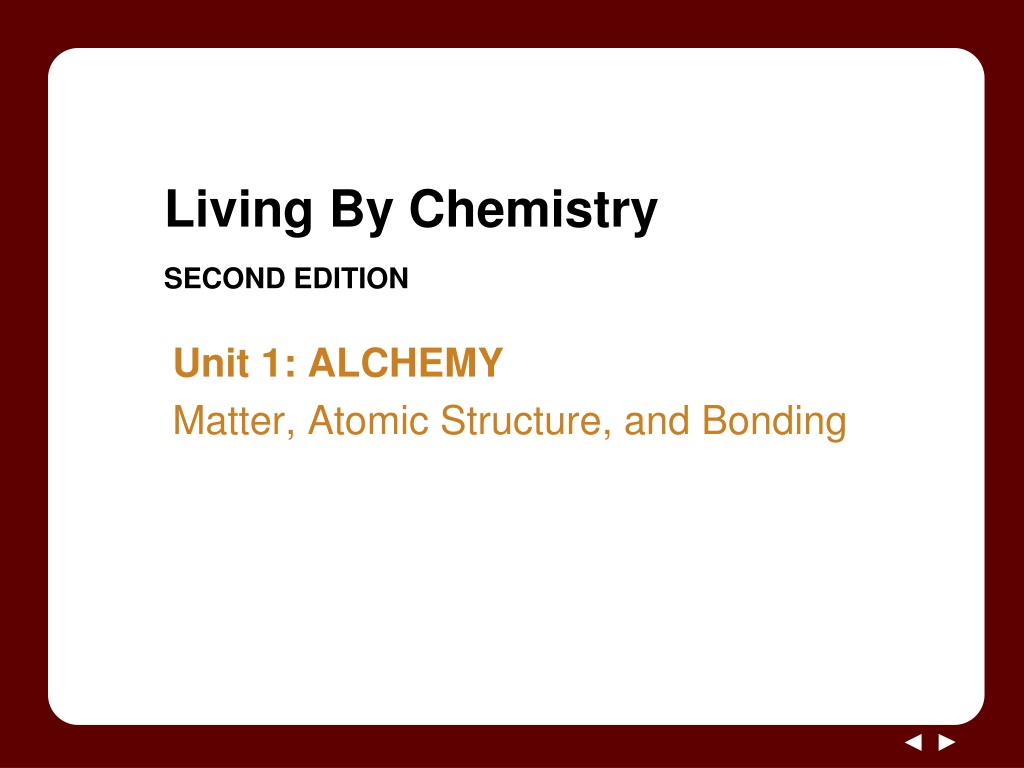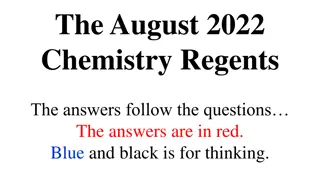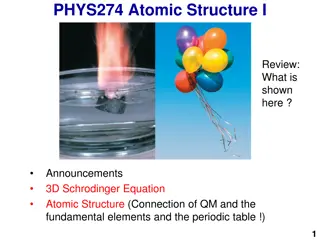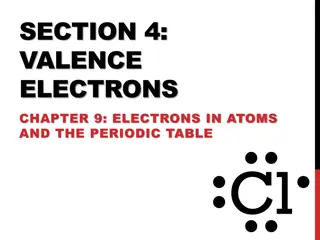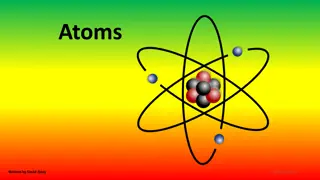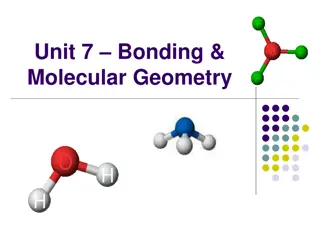Understanding Electron Arrangements in Atoms
Explore the concepts of electron arrangements in atoms through activities and discussions on valence and core electrons, shell models, and patterns in the periodic table. Discover how the number of electrons in shells relates to element properties and learn to create shell model diagrams. Dive into the significance of valence and core electrons in determining chemical behavior and understand why elements in the same group exhibit similar properties.
Download Presentation

Please find below an Image/Link to download the presentation.
The content on the website is provided AS IS for your information and personal use only. It may not be sold, licensed, or shared on other websites without obtaining consent from the author. Download presentation by click this link. If you encounter any issues during the download, it is possible that the publisher has removed the file from their server.
E N D
Presentation Transcript
Living By Chemistry SECOND EDITION Unit 1: ALCHEMY Matter, Atomic Structure, and Bonding
Lesson 18: Life on the Edge Valence and Core Electrons
ChemCatalyst 1. What do you notice about the number of spokes on the circles? The spokes represent electrons. Do the spokes represent the total number of electrons? Explain your thinking. 2.
Key Question Why do elements in the same group in the periodic table have similar properties?
You will be able to: create a shell model diagram of an atom, placing the correct number of electrons in the correct shells explain the difference between a valence electron and a core electron describe the patterns in the periodic table associated with electron arrangements
Prepare for the Activity Work in pairs.
Prepare for the Activity (cont.) The Shell Model The surface of each sphere represents an area where an electron or a group of electrons is most likely to be found.
Prepare for the Activity (cont.) Electron shells are the levels around the nucleus where electrons can be found. Sodium and magnesium have electrons in three electron shells.
Discussion Notes The atomic number of an element is the same as the total number of electrons. The period (row) number of the element is the same as the number of electron shells. For main-group elements, the group number of the element is the same as the number of electrons in the outermost shell.
Discussion Notes (cont.) Table of Valence and Core Electrons
Discussion Notes (cont.) Valence shell: The outermost electron shell in an atom. Valence electrons: The electrons located in the outermost electron shell of an atom. Core electrons: All other electrons in an atom besides the valence electrons.
Discussion Notes (cont.) The arrangement of electrons in their shells is highly predictable. The numbers of core electrons also exhibit patterns across each row of the periodic table.
Wrap Up Why do elements in the same group in the periodic table have similar properties? Electrons occupy distinct areas around the nucleus called electron shells. The arrangement of electrons in these shells is highly predictable. For main group elements, elements in the same group have the same number of valence electrons. The number of valence electrons increases across a period. The number of shells and the number of core electrons increase as you go down a group.
Check-In Provide each piece of information for element 34. a. The element s name and symbol. b. The total number of electrons in an atom of this element. c. The number of core electrons in an atom of this element. d. The number of valence electrons. e. The group number for this element. f. The names of other elements with the same number of valence electrons.
